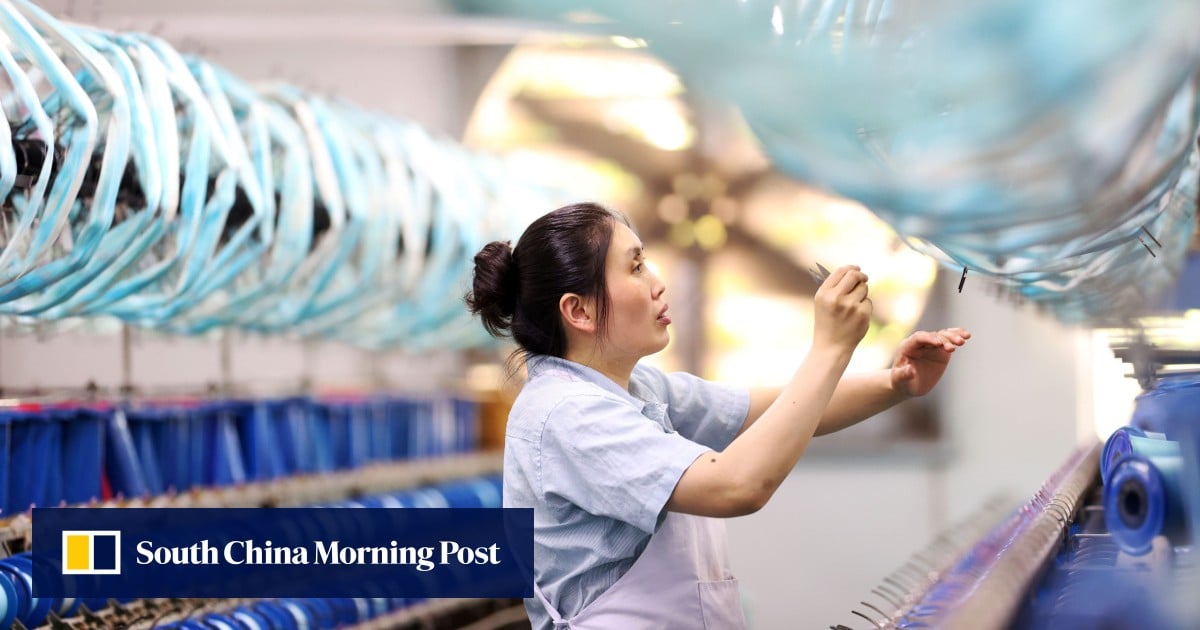
“Policy support should drive a turnaround later this year. But with officials taking a restrained approach to stimulus, any reacceleration in growth is likely to be modest.”
Last week, the Politburo – the Communist Party’s prime decision-making body – listed key tasks for the second half of the year to expand domestic demand, improve confidence and prevent risks after the country’s sequential economic growth slowed to 0.8 per cent in the second quarter.
“[The data] puts more onus on policymakers to move swiftly to provide much-needed policy support, echoing the recent pledge made in the Politburo meeting last week,” said Erin Xin, Greater China economist at HSBC.
Last week, as part of its efforts to bolster the slowing economy, Beijing also released a 31-point plan to support entrepreneurship, which included an approved list for private investors.
“China’s official PMI data provides little encouragement that the economy is turning the corner,” said Robert Carnell, regional head of research for Asia-Pacific at ING.
“And while the authorities have been vocal in their support for the economy, so far, that has not translated into the sort of sizeable fiscal policy stimulus many in the market have become used to expecting. We don’t think it is coming.”
Within the official manufacturing PMI, the new-orders subindex rose to 49.5 in July from 48.6 in June, while the new-export-orders subindex fell to 46.3 from 47.2.
The one component that stands out from the rest, is expectations, which looks like an unrealistic outlier compared with what is going on elsewhere
The headline official manufacturing PMI edging up appears to reflect a slight easing of downward pressure on domestic demand, according to Capital Economics, adding that the export-orders component kept declining – to a six-month low – and that this points to a further drop in exports.
Within the non-manufacturing gauge, the services subindex fell to 51.5 in July from 52.8 in June, while the construction subindex fell to the second-lowest reading on record at 51.2, down from 55.7 in June.
“Looking at the breakdown of the non-manufacturing sector, what strikes you is that most of the sub-components are already showing contraction. The one component that stands out from the rest, is expectations, which looks like an unrealistic outlier compared with what is going on elsewhere,” Carnell added.
“We can only put this down to continued hope that the government will pull something out of the bag that will reinvigorate the economy. However, while we believe that a great many micro measures will be implemented to improve the functioning of the economy, including a reduction in constraints on the private sector, we aren’t at all convinced that there is a fiscal bazooka waiting to fire up the economy.”
The official composite PMI, which includes both manufacturing and services activity, fell to 51.1 in July, down from 52.3 in June and reaching the lowest level on record outside of the pandemic.
“The data release showed mixed messages, as the manufacturing PMI came in better than expected but non-manufacturing PMI weakened. It seems the economic momentum is still quite weak,” said Zhang Zhiwei, president of Pinpoint Asset Management.
“The Politburo meeting acknowledged the challenge the economy faces. The key issue is what policies will be launched after the meeting and how effective they will be. Those policies in the property sector are particularly important to watch.”


